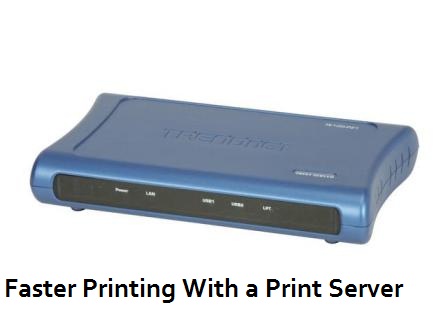A print server can be beneficial if several individuals share a locked system of servers that use the same printer. The print server features typically involve printing funds for all linked customer pcs and storing printed items in order until the machine is prepared to run.
One of the most useful things is that a printed server can queue jobs so that every assignment to be published is printable when the printer is not busy.
Why You Should Use A Server-Based Printer
PCs convey one or more printers in server-based publishing across a conventional Wi-Fi or Ethernet network. The server system packages the application as separate tasks when you write a file on your PC and gives it back to the server.
Every print task is a different business, and thus, there is no risk that the machine will “blend” your work documents with others from another laptop. When the printer is active, tasks wait for their shift in a retaining line. This is the opposite of non-networked publishing, in which each desktop needs to be linked with a printer by a USB.
Nowadays, a Print Server is recommended instead of traditional printers as it provides a more consistent and quicker job.
Benefits of Print Servers
If you’re using a traditional printer, here are several reasons why you should consider changing to a server-based printer:
- Add a printer in minutes to your network. Your network does not need to be shut down. If a large print printer is in use, a user can use another printer by utilizing a Print Server to avoid the queue. This could provide a lifesaver for this urgent report to meet the critical deadline you won’t want to miss.
- Cable ranges extended. For USB or Parallel printer cable, the maximum recommended distance is 5 meters. With a Print server, wireless lengths of up to 100 m can be connected straight between your PC and print or 200 m via Network Hub or Switch.
- Low cost and comfortable category 5 connections. Many contemporary structures already have several ceiling pipes in each space preinstalled with this cable! This type of cable is exceptionally cost-effective and easy to install, even if the cable is not preinstalled.
Selection of USB or Parallel Type Printing Port Model
Choose models for single or several ports that will suit your work situation. Multiport designs can be used when you need to link several printers to your network, provided that your printers are close to one another. Only one network point is necessary in this case.
Simple port designs would be more economical if you needed to link two or more printers at a distinct location.
You Might Like: A Guide To An Audio Interface For Podcasting
However, multiple port models will expand in the future. Two network nodes are necessary for this situation. Every Network Point utilizes a Network Hub/Switch port so be sure you have sufficient backup links. You can readily add network hubs or switches to a current scheme to generate new connections.